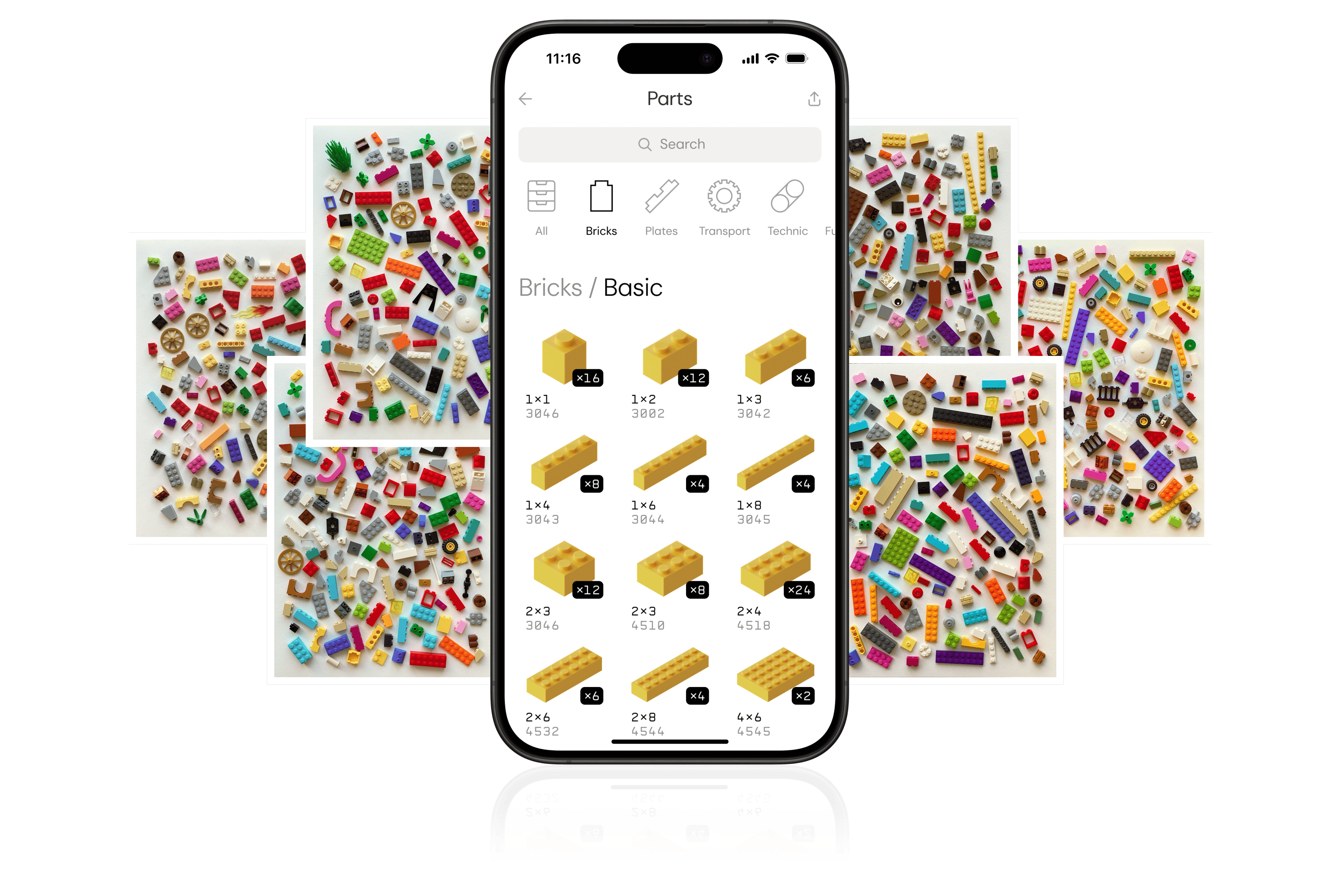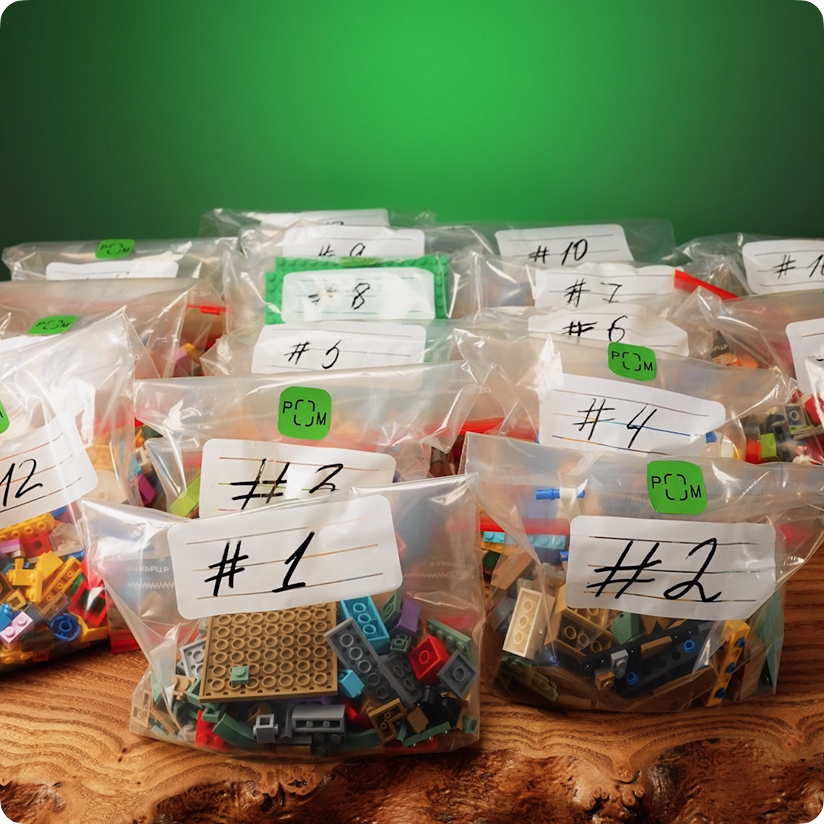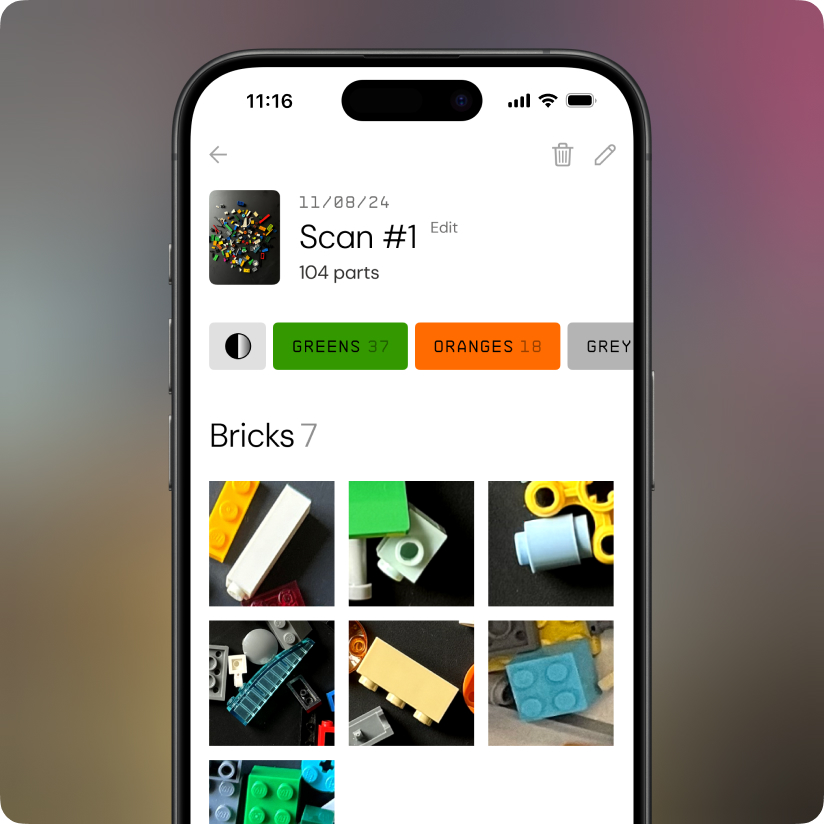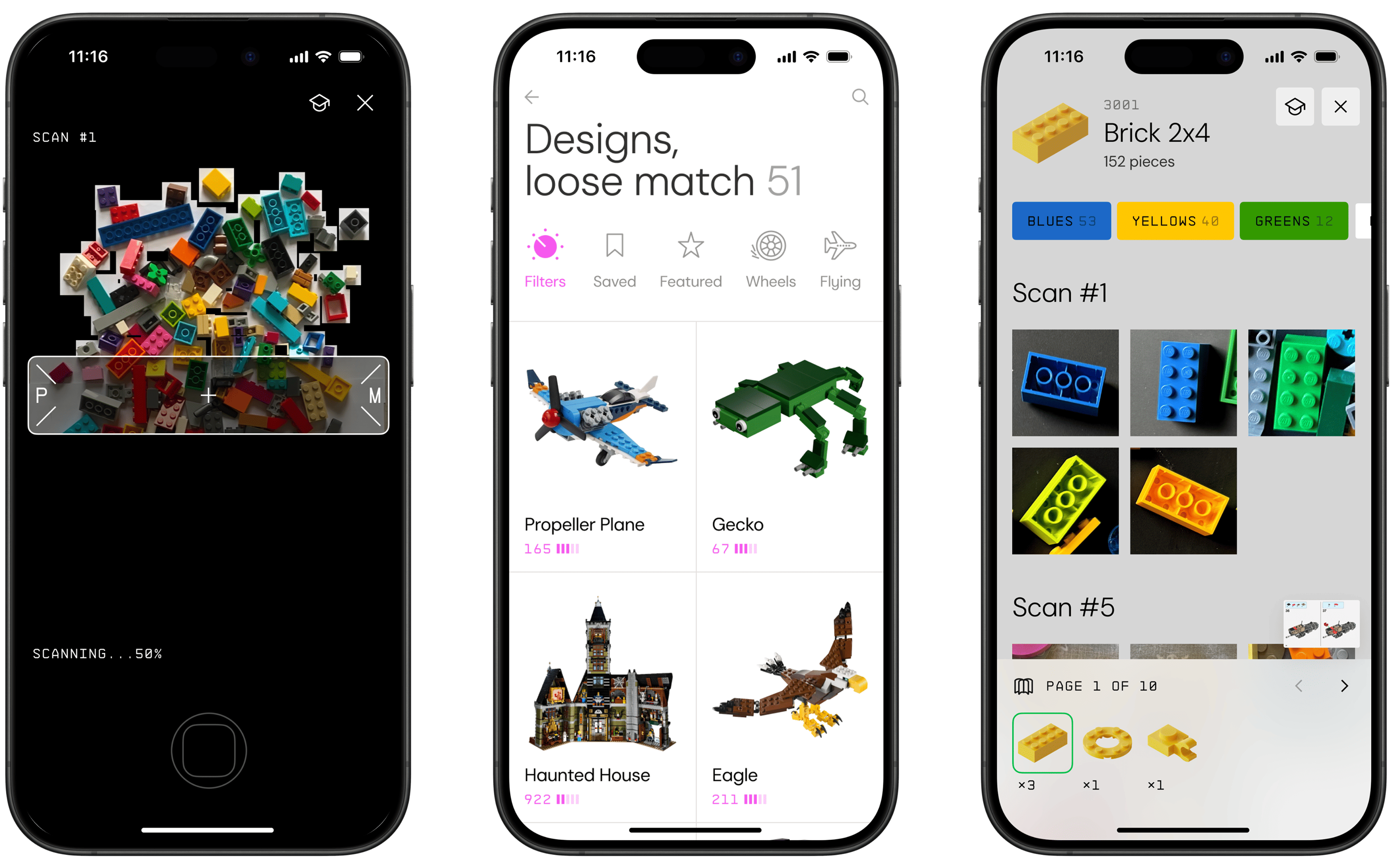Your pile of bricks has potential you don’t know about

manifesto
Homes have around 1 trillion (eighteen zeros!) bricks worldwide. Everyone and their cousin have some old parts somewhere. A box or five boxes in the attic or the kids’ room is a treasure for some — but a dust collector for most.
But why so? We’d argue that any pile of bricks should be bursting with possibilities. It is a perfect family time and a good way to wind down, creating something personal. Plenty of resources have fun building instructions and even more possibilities for creating something unique. It can become a creative gift and even be sold for quite a buck.
As far as we know, there is one key obstacle for any forgotten pile of bricks to become useful.
First, it has to be turned into a collection: a structured, accessible, well-known array of pieces.
Pile → Collection
Usually, it goes as follows: you take all the bricks, take lots of boxes, and sort them either by color, by part shape, or both combined.
3 ways of sorting
Sorting by color is easy but not very helpful. Sorting by shape is helpful but not easy. Sorting by both is a heroic deed: we admire everyone who has enough patience to do it. And it’s not that you sort everything once, and it’s in perfect order since then. Of course not. You need to sort things every time you use something. And the more advanced the method, the harder it is to maintain it.
the problem
Even if we put aside all the complexity of setting up and maintaining a sound storage system, there is one problem that sorting cannot solve.
There are tens of thousands of different shapes. That’s a lot! And however good you are at sorting them, you can’t know if you even have any exact one you need (or enough of them for the build you conceived).
As soon as you can’t know down to every part what exactly you have on hand, there is also no easy way to find out what is buildable and what is not. Imagine you fancied a large build design in one of the community-driven web catalogs. How do you know if you have the parts required for it? You can never be sure you have all the parts, and if you don’t have them, there is no easy way to make a nice list of what to buy.
That’s precisely why we invented Pile[o]meter: a storage system and an app supporting it. Let’s compare it with all the other approaches we mentioned.
What is Pile[o]meter
In a nutshell
Pile[o]meter (P[o]M for friends) is an app and a blueprint for a storage system that we developed, tackling the problems mentioned before. It has two dimensions.

All the parts are stored in numbered transparent bags, 100 to 200 random pieces each.

The app has a complete catalog of every part you have and where it is stored.
setup & benefits
All you need to do for setup is to scan the parts you have batch by batch and put them in numbered bags. It is not that hard to organize, and everything becomes easy afterward:
Maintenance
Maintenance is simple and consists of two steps:
Any Caveats?
Well, yes and no. First, you still need time to set up the system. Second, even though we’re constantly improving our parts scanner, some mistakes are still made. That’s why we pay lots of attention to making fine-tuning as easy as possible: you don’t have to rely on the scanner exclusively; you can adjust whatever you want.
Still, the scanner mainly just works, especially if you follow the prep guides. Setup is more straightforward than for most other methods, and you can always combine Pile[o]meter with any other sorting method you like: there is a batch editing feature precisely for this.
download
Hopefully, there will be a day when we digitize the whole trillion of world parts, brick by brick, and no part will be wasted tucked away. You can bring this moment closer by downloading P[o]M from the App Store or Google Play!
